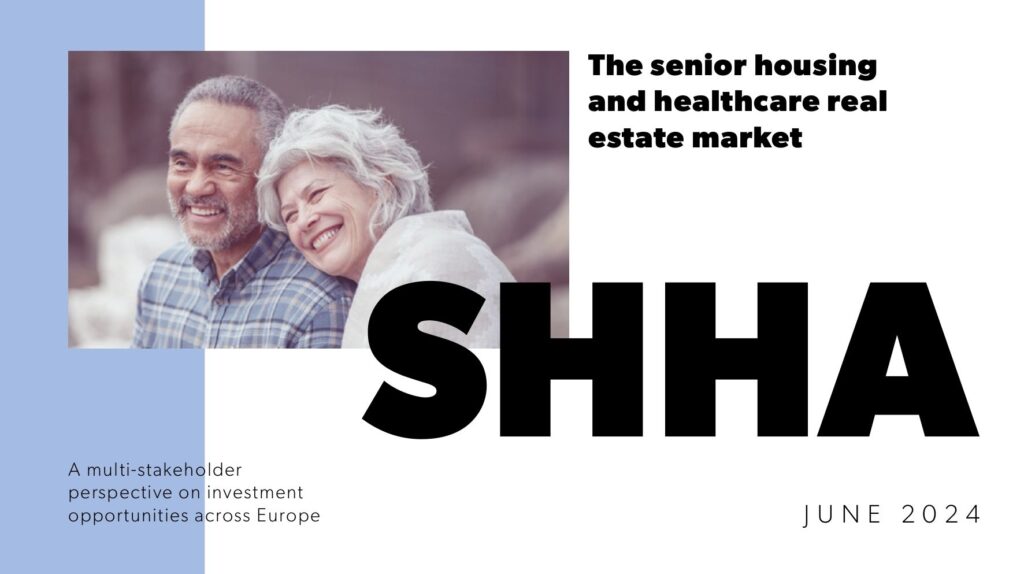Interview with Jan-Bastian Knod, International Partner, Head of Residential Investment Germany, Head of Healthcare Advisory, Capital Markets, Cushman & Wakefield
What emerging trends do you see as having the greatest impact on the seniors housing and healthcare market?
The senior housing and healthcare market in Europe is set for significant changes due to emerging trends, which are outlined as follows.
One key trend is the rise in interest rates, which has reduced investment volumes. In 2023, nursing home transaction volumes dropped to just over €4 billion, a 35% decline from the previous year and a 50% drop from 2021. This reduction is due to cautious investment attitudes and the gap between seller and buyer price expectations. Additionally, inflation has led to significant increases in operational costs for operators, further weakening the market. The prime yield of nursing home assets increased by 50 to 100 basis points in 2023, with transaction yields below 5.00% remaining rare, setting the prime yield for Q1 2024 above 5.00% in many European markets.
However, other trends are continuously driving innovation and strategic investments, shaping a more resilient and attractive market. Sustainability is pushing for green building practices and energy efficiency. Developers are adopting sustainable materials and systems to meet regulatory demands and attract eco-conscious investors, leading to long-term savings and increased property values. Regulatory changes are also mandating improved accessibility and inclusivity, requiring design modifications such as ramps and wider doorways to accommodate individuals with disabilities.
The integration of healthcare services within senior living environments is becoming more common, with facilities incorporating spaces for medical offices, telehealth and on-site clinics. This enhances property value by offering comprehensive care options on-site. There is also a growing emphasis on wellness and preventative care, with communities integrating wellness programmes and fitness facilities to promote healthy ageing and improve resident well-being.
In summary, while rising interest rates and inflation pose challenges, trends in sustainability, regulatory compliance, healthcare integration, and wellness initiatives are driving the transformation of the senior housing and healthcare market in Europe, making it more resilient and attractive for future investments.
How do you assess the long-term financial viability and growth potential of senior housing and healthcare investments?
Nursing care is one of the most significant growing markets and serves as essential social infrastructure, forming the backbone of each economy. Due to demographic changes and the resulting ageing population, the senior living market is becoming increasingly important in property investment. With a significant rise in the number of people over 65, this demographic shift creates sustained demand for senior housing and healthcare services. As life expectancy increases, the need for long-term care and healthcare services also rises, supporting long-term demand. Senior housing and healthcare facilities often have long-term leases and stable occupancy rates, providing reliable income streams. Particularly, nursing homes benefit from government programmes that ensure income for operators.
Following the re-pricing that occurred in 2023, the market is expected to become dynamic again in 2024. We anticipate ongoing stabilization of the market, particularly in operational performance of healthcare operators.
What do you see as the key challenges facing the senior housing and healthcare sector in the coming years?
The senior housing and healthcare sector faces several challenges in the coming years that impact its overall stability and growth. One primary issue is the increasing demand for skilled healthcare professionals, including nurses, caregivers and administrative staff. The supply of qualified personnel is not keeping pace with this demand, leading to high turnover rates and the necessity for continuous training, which exacerbates operational challenges and strains resources. Another significant challenge is the constantly evolving landscape of healthcare regulations. Facilities must remain compliant with federal, state and local laws, which include patient care standards, privacy laws, and safety regulations. These regulatory changes often result in substantial cost increases for operators, directly impacting profitability and necessitating ongoing adjustments to operational practices.
Additionally, integrating new technologies such as electronic health records, telemedicine, and advanced care monitoring systems is crucial. Both operators and users must adopt and effectively utilize these technologies to enhance care quality and operational efficiency, requiring significant investment and training. Moreover, seniors and their families are increasingly demanding higher standards of living, including improved amenities, personalized care, and more lifestyle opportunities. Meeting these evolving expectations necessitates operators to innovate and invest in enhancing their service offerings and facility standards. Addressing these challenges requires a comprehensive approach that includes strategic planning, investment in workforce development, embracing technological advancements, maintaining regulatory compliance, and focusing on delivering high-quality, personalised care. Successfully navigating these issues will be essential for the long-term viability and growth of the seniors housing and healthcare sector.
Do you expect more capital to come into the sector?
There is a lot of capital available for investments in nursing homes Europe-wide. Demographically driven demand, sustainable cahflow and therefore great return stability are key attractions for nursing home investors. The nursing care sector is experiencing significant growth and is considered essential social infrastructure, playing a crucial role in supporting every economy. There are many green shoots of optimism. We leave behind a difficult 2023 for nursing homes, but we are expecting investment to recover in 2024.
What attracts investors to this asset class?
Investors are increasingly drawn to the senior living and healthcare market for several reasons. Firstly these facilities often provide stable cash flows due to long-term leases and consistent occupancy rates. Moreover, healthcare is deemed an essential service, making investments in this sector resilient to economic downturns. Government support further stabilises revenues for operators and investors. Ageing facilities offer value-add opportunities, enticing investors to improve and upgrade properties. Furthermore, there’s a growing investor interest in environmental, social, and governance (ESG) factors, with investments in sustainable senior living and healthcare facilities aligning with these principles. Lastly, the long-term growth potential of the sector, fueled by the continuous ageing of the population, makes it an attractive investment option for those seeking stable returns over time.

Download the latest SHHA Report to read more Thought Leaders Interviews
